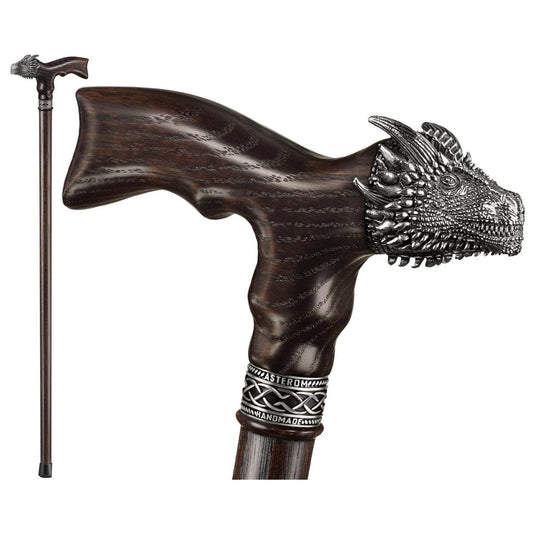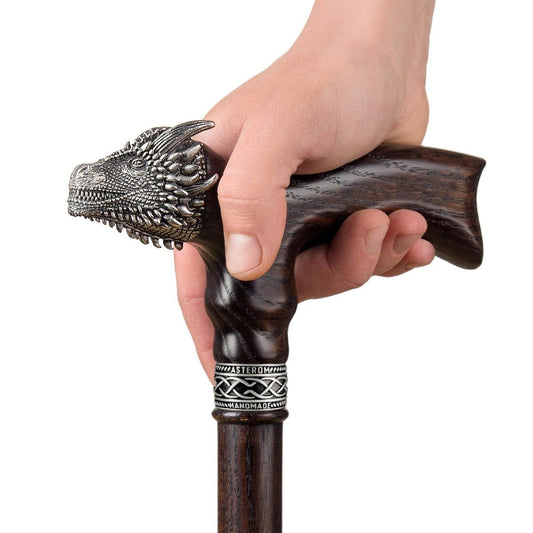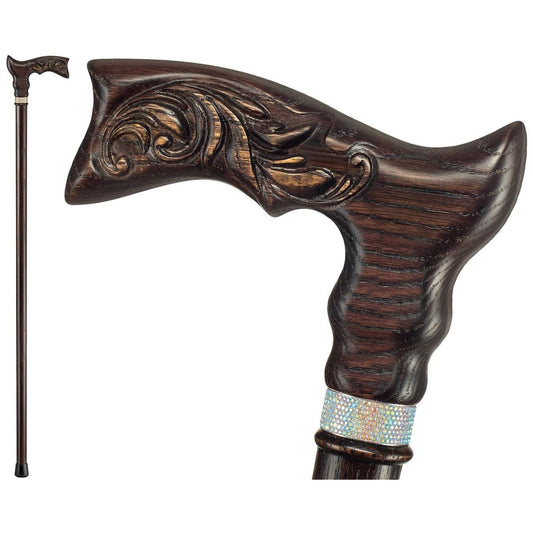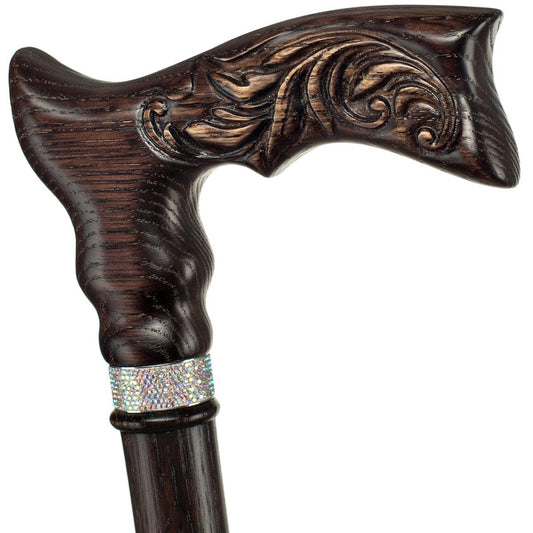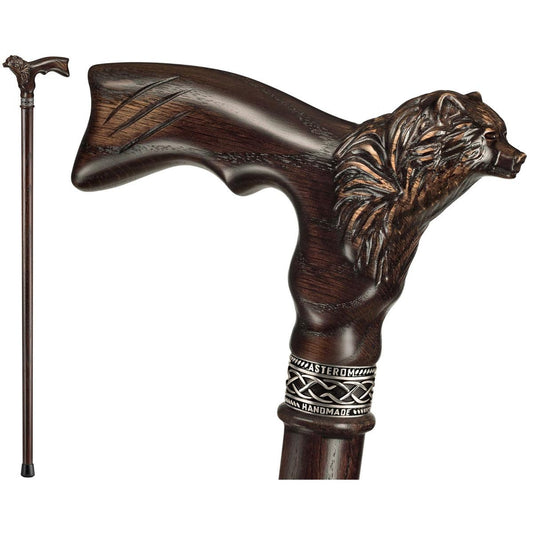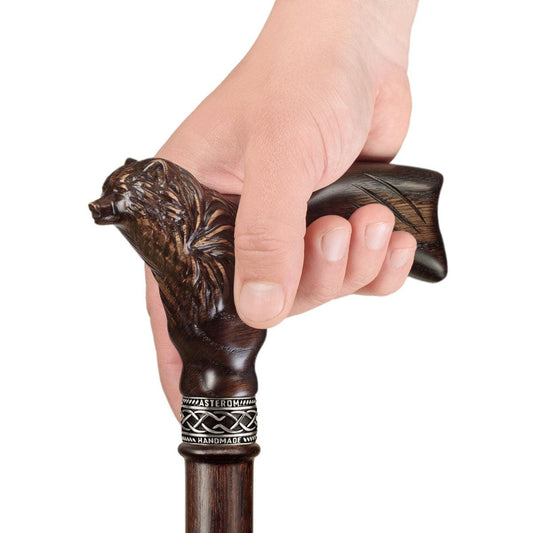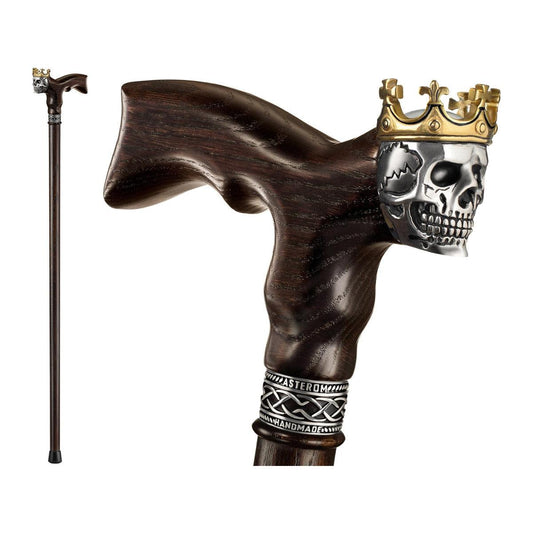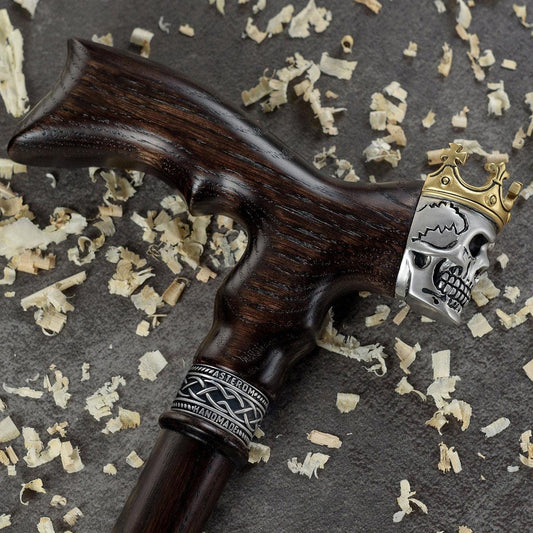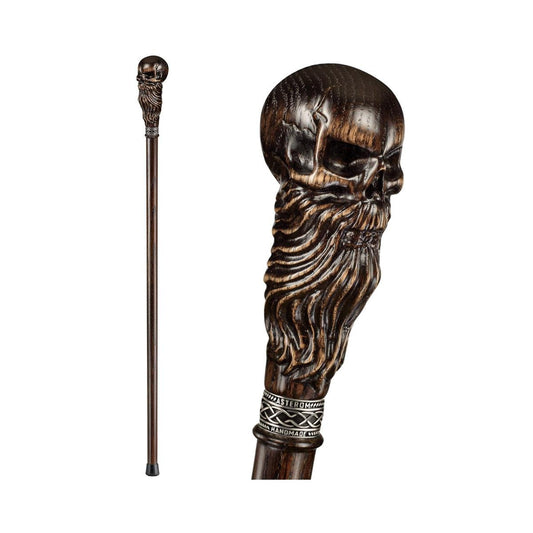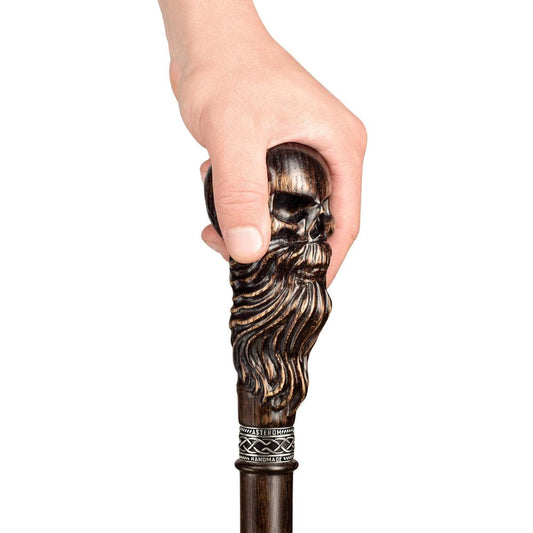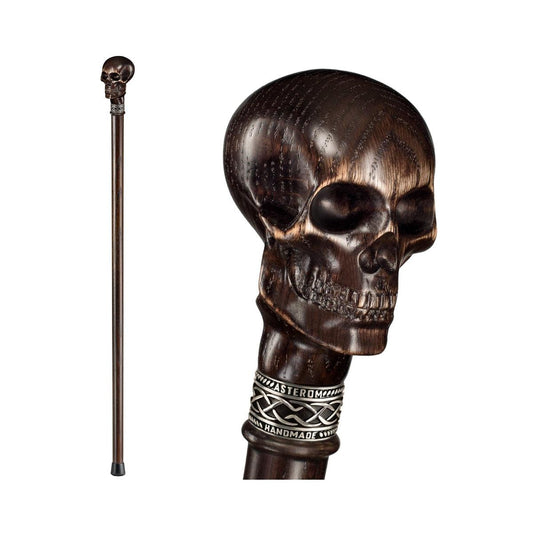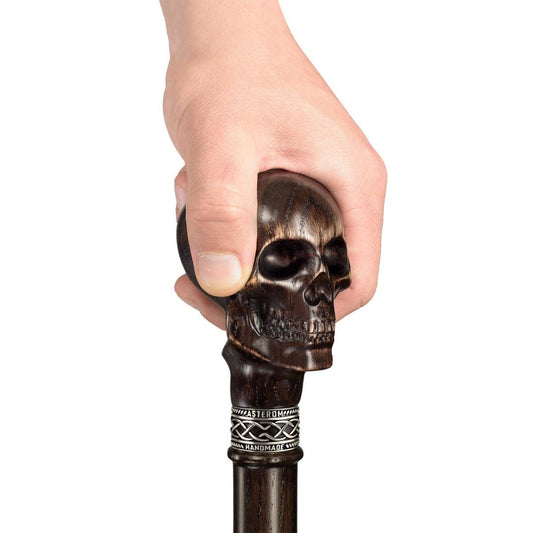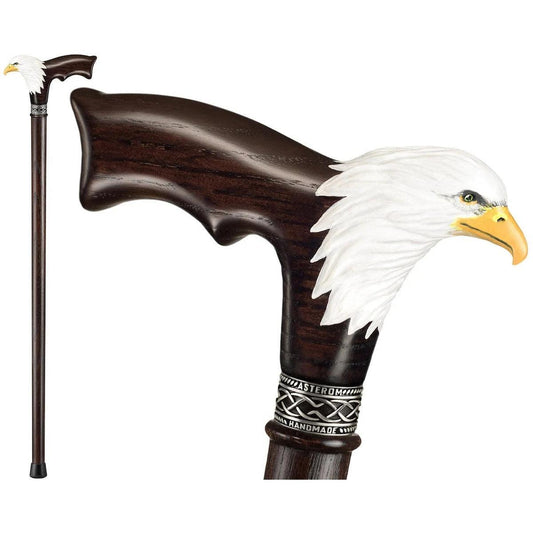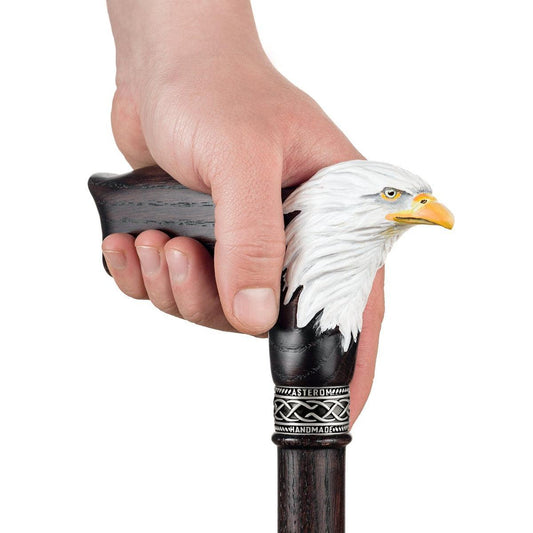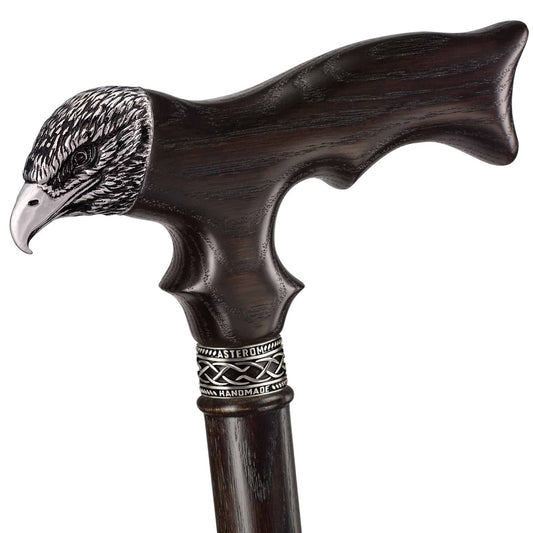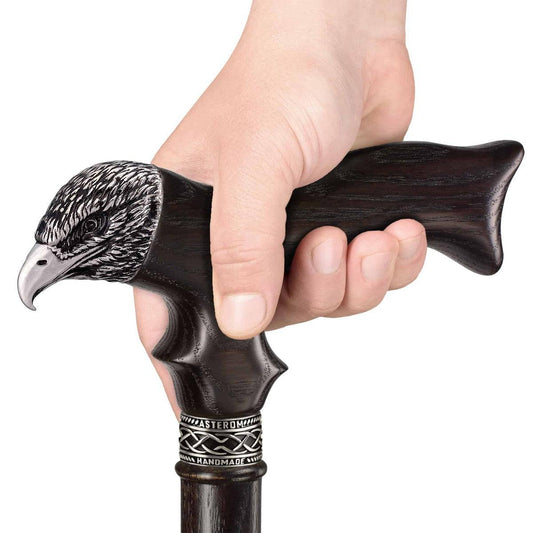Ah, the world of walking aids - a realm that may be overlooked but has been a symbol of style, support, and pride for centuries. As someone who has embraced the use of a cane, I, Alexander Sterling, invite you to join me on a journey to explore the nuances of these two iconic walking aids.
Introduction to Walking Sticks and Canes
In human history, few objects have been as constant and versatile as walking sticks and canes. They carry tales of adventure, resilience, and symbols of status and style. The following overview provides several perspectives on these simple aids.
Walking Sticks: The Traveler’s Companion
The walking stick, often crafted from wood and sometimes adorned with intricate carvings, has been a trusted companion for adventurers. From the ancient pilgrims traversing challenging terrains on spiritual quests to the modern-day hiker exploring the wilderness, the walking stick symbolizes endurance and exploration. Its rustic charm speaks of nature, journeys taken, and the indomitable human spirit that seeks to venture beyond the known.
In many cultures, the walking stick has also been a symbol of wisdom. Elders, shamans, and wise men and women have often been depicted with a walking stick in hand, signifying their connection to the earth and the knowledge they possess.
Canes: The Emblem of Elegance and Support
Canes, on the other hand, have a more urban and sophisticated allure. Historically, they were not just tools of mobility but also fashion statements. The aristocrats of yesteryears, from European nobility to Asian royalty, often carried ornate canes, sometimes embedded with jewels or crafted from precious metals. A cane was a mark of one’s status, a blend of functionality and flair.
Recently, canes have evolved to cater to the needs of the modern individual. They come in various designs, materials, and functionalities, from foldable ones for convenience to those with ergonomic grips for comfort.
But beyond their practicality, canes, like their rustic counterpart, tell a story. For many, like myself, a cane is not just about support; it’s about expressing one’s style, personality, and confidence.
A Shared LegaIn modern times, canes have evolved to meet individual needs. They come in various designs, materials, and functionalities, from foldable ones for convenience to those with ergonomic grips for comfort. However, beyond practicality, canes tell a story, expressing style, personality, and confidence.
Walking sticks and canes are a testament to human ingenuity. They help us adapt, innovate, and overcome challenges. From shepherds guiding their flocks to city dwellers navigating the urban jungle, these aids are more than just objects; they are extensions of our identity.
In the world of walking aids, each stick and cane carries a story, history, and promise of support. As we explore further, we uncover their functionality and the rich tapestry of human experiences they represent.

The Primary Purposes of Walking Sticks and Canes
At their core, walking sticks and canes serve the noble purpose of providing support. But their roles extend beyond the mere physical.
- A walking stick, often the choice of adventurers and explorers, offers balance on uneven terrains, making it a trusted companion on many a journey.
- Canes, on the other hand, are tailored for daily use. They offer stability and confidence, allowing individuals to move with grace and poise. For many, like myself, a cane is not just a tool—it's an extension of one’s personality, a statement of style.
Differences Between a Walking Stick and a Cane
When it comes to getting around, many people find walking sticks and canes to be helpful tools. While they serve the noble purpose of providing support, their designs, functionalities, and cultural connotations set them apart.
As a person who has navigated the world with the assistance of a fashionable walking stick, I have always been fascinated by the subtle and not-so-subtle distinctions between these two companions.
Here is an overview of the key differences between the two.
Design and Structure
At first glance, the most apparent difference lies in their design. A walking stick, typically made of wood and sometimes adorned with carvings or embellishments, evokes a rugged sense of nature and tells tales of adventures and journeys.
The cane, on the other hand, is a marvel of ergonomic design. Its curved handle, is tailored for a comfortable grip, ensuring that the user’s weight is distributed evenly. Modern canes are often made from various materials, from wood to metals, and even lightweight carbon fiber, reflecting the blend of tradition and innovation.
Functionality and Use
Walking sticks are the choice of adventurers. They are designed for balance, especially on uneven terrains like mountain trails or forest paths. Their straight structure makes them versatile, serving as tools during hikes or even as defensive aids when needed.
Canes, meanwhile, are tailored for daily, urban use. Their primary function is to provide stability and support. The curved handle of a cane is specifically designed to be held comfortably, ensuring that the user can navigate city streets, stairs, and corridors with ease and confidence.
Cultural Connotations
Throughout history, walking sticks and canes have carried cultural and symbolic meanings. The walking stick, with its rustic charm, has often been associated with travelers, wanderers, and wise sages. It symbolizes exploration, adventure, and a connection to nature.
On the other hand, canes have been symbols of status, authority, and elegance for centuries. From ornate canes of aristocrats to simple yet stylish canes of modern individuals, they represent a blend of functionality and fashion.
In essence, while both walking sticks and canes provide support, they cater to different needs, aesthetics, and lifestyles. Whether you’re an adventurer at heart or a city dweller seeking style and support, understanding these differences can guide you in choosing the perfect companion for your journey.

Advantages and Disadvantages of Using a Walking Stick
Walking sticks are versatile and robust. They provide stability and support during hiking and walking. The walking sticks can also be for tasks like clearing a path or testing a stream's depth during hikes. Their straight design makes them ideal for varied terrains, from mountain trails to sandy beaches.
However, for daily use, especially in urban settings, a walking stick might not be the most practical choice. Its straight design lacks the ergonomic benefits of a cane, and it might not provide the same level of support and stability on paved roads.
Advantages and Disadvantages of Using a Cane
Canes are designed with daily use in mind. Their curved handles provide a comfortable grip, and many come with features like non-slip tips for added safety. As someone who values elegance and functionality, a cane is the perfect accessory for me.
However, canes might not be suitable for more rugged terrains. Their design may be ideal for city streets, but it may not be as versatile as a walking stick in the great outdoors.
Personal Anecdotes and Testimonials
Throughout the years, I’ve encountered numerous individuals, each with their own unique story of using walking aids.
For instance, Clara, a ballet dancer, who, after an injury, adopted a cane not only as a support but also as a dance partner.
Then, there is Tom, an enthusiastic hiker who swears by his trustworthy walking stick on every adventure.
Such stories emphasize that walking aids are more than just tools; they are companions, symbols of resilience, and a testament to the human spirit.
Frequently Asked Questions: Walking Sticks vs. Canes
Why might someone choose a walking stick over a cane?
Ah, the age-old question. With its straight and elongated design, a walking stick is often the choice for those who tread on uneven terrains, be it mountain trails or forest paths. It’s the adventurer’s companion, offering balance and versatility. The rustic charm of a walking stick speaks of nature and exploration. So, if you’re someone with a penchant for adventures, a walking stick might be your trusted ally.
I live in the city. Is a cane more suitable for me?
Indeed, a cane is often the more practical choice for the urban dweller. It is designed with a curved handle and provides a comfortable grip, ensuring stability on paved roads and city streets. Beyond its functionality, a cane is also a statement of style and sophistication. As someone who navigates the urban jungle with a cane, I can attest to the confidence it imparts.
Are walking sticks and canes suitable for all age groups?
Absolutely! While they might carry historical and cultural connotations, both walking sticks and canes are timeless in their appeal. From the young adventurer embarking on their first hike to the elderly gentleman taking a stroll in the park, these aids cater to all ages. It’s all about choosing the one that aligns with your needs, lifestyle, and personal flair.

Can I customize my walking aid to reflect my personality?
Certainly! In today’s world, customization is the name of the game. Whether it’s a walking stick adorned with carvings that tell your story or a cane crafted from a material that resonates with your style, there’s ample scope for personalization. Remember, a walking aid is not just a tool—it's an extension of your identity. At stickyourcane.com, there are many options to customize a cane to suit your individual needs and style.
How do I choose the right walking aid for me?
A poignant question. Choosing a walking aid is a blend of understanding your needs and resonating with your style. Reflect on where you’ll use it most, the terrains you’ll tread, and the statement you wish to make. And remember, whether it’s a stick or a cane, let it reflect your spirit, adventures, and tales.
What are the origins of walking sticks and canes?
Ah, the history of walking aids is as rich as the tapestry of human civilization itself. With their rustic charm, walking sticks trace their origins to ancient times, serving as companions for travelers, pilgrims, and even shepherds. They were symbols of endurance, exploration, and connection to nature.
On the other hand, Canes emerged as emblems of elegance and status, especially among the urban elite. Historically, canes were not just tools of mobility but also fashion statements, often adorned with intricate designs and made from precious materials.
Which is more versatile for varied terrains: a walking stick or a cane?
For the adventurous souls who tread on uneven terrains, be it mountain trails or forest paths, a walking stick is the trusted companion. Its straight design offers balance and versatility, making it ideal for such adventures.
Canes, while perfect for city streets with their ergonomic design, might offer a different level of adaptability on rugged terrains.
Why do many prefer canes for daily use?
Canes, my dear reader, are tailored for the urban landscape. Their design ensures stability, allowing individuals to navigate city streets, stairs, and corridors with grace and confidence. Moreover, the modern cane is not just about support; it’s a statement of style, personality, and elegance. For many, a cane is an extension of their identity, making it a preferred choice for daily use.
Are there any statistics on the use of walking sticks and canes?
Certainly! It's estimated that approximately eight out of 10 people will experience back pain symptoms at least once in their lives, necessitating the use of walking aids for many. It’s evident from the growing market for these aids that their significance in daily life is undeniable.
How have walking aids impacted the lives of real users?
Walking aids, whether sticks or canes have transformed lives. They play multifaceted roles, from providing physical support and boosting confidence to being symbols of resilience and style.
Personal anecdotes abound, from ballet dancers like Clara, who embraced a cane as a dance partner after an injury, to avid hikers like Tom, who swear by their trusty walking sticks. These stories serve as heartwarming reminders of the profound impact walking aids have on individuals.
Are there any modern innovations in walking aids I should be aware of?
The world of walking aids, like everything else, is evolving. Today, we have canes with adjustable heights, walking sticks with in-built compasses, and even those with smart features like GPS. While I have a soft spot for the classics, I must admit that these innovations are bridging the gap between tradition and modernity, offering the best of both worlds.
Conclusion
In conclusion, whether you choose a walking stick or a cane, remember that it’s not just about support—it's about making a statement. It’s about embracing challenges with grace, style, and confidence. As we stride forward, let’s do so with pride, elegance, and trusty walking aids by our side.


